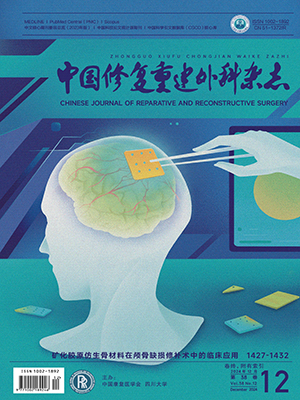Objective To investigate the surgical effect on different types of spinal canal stenosis of retrograde degeneration. Methods The retrospective analysis was performed on 96 patients (85 males, 11 females; average age 54, range 39-71) admitted from September 2001 to January 2004 for spinal canal stenosis of retrograde degeneration. The patients were divided into five groups according to their clinical symptoms and signs and the imaging of the spinal cord. In group A, 39 patients had one segment of the spinal canal stenosis and they underwent the recessively expanding operation through the intervertebral canal by opening a window between the vertebral plates. In group B,21 patients had stenosis of the central vertebral canal of one segment and theyunderwent excision of the intervertebral disc through the window opened betweenthe vertebral plates and the recessively expanding operation.In group C, 18 patients had degenerative spinal derangement of one segment and they underwent decompression through the window opened between the bilateral vertebral plates and the recessively expanding operation, and then underwent the internal fixation and bone grafting. In group D, 11 patients had the mixed stenosis of the vertebralcanal of more than 2 segments and they underwent the recessively expanding operation through the window opened bilaterally on the diseased segment and excisionof the yellow ligament and the intervertebral disc. In group E, 7 patients had degenerative lateral curvature of the spine and they underwent the combined surgical procedures including decompression, internal fixation, and bone grafting. All the patients were followed up after operation. Results The follow-up of the 96 patients for 6-36 months with an average of 12.2 months showed that they had no postoperative complications. According to the JOA Scoring,85 patients had an excellent result, 9 had a good result, 1 had a fair result, and only 1 had a poor result. The X-ray films revealed no mistaken placing of the nails on the vertebral arch, broken nails or loosened nails. Conclusion The limited surgery and effective decompression can improve curative effects and reduce complications of spinal canal stenosis of retrograde degeneration. The imaging of the spinal cord has an important value in the choice of surgical protocols for spinal canal stenosis of retrograde.
Citation: ZHANG Li,YANG Zhongli,ZUO Yanwu.. SURGICAL TREATMENT FOR SPINAL CANAL STENOSIS OF RETROGRADE DEGENERATION. Chinese Journal of Reparative and Reconstructive Surgery, 2006, 20(4): 413-415. doi: Copy
Copyright © the editorial department of Chinese Journal of Reparative and Reconstructive Surgery of West China Medical Publisher. All rights reserved




